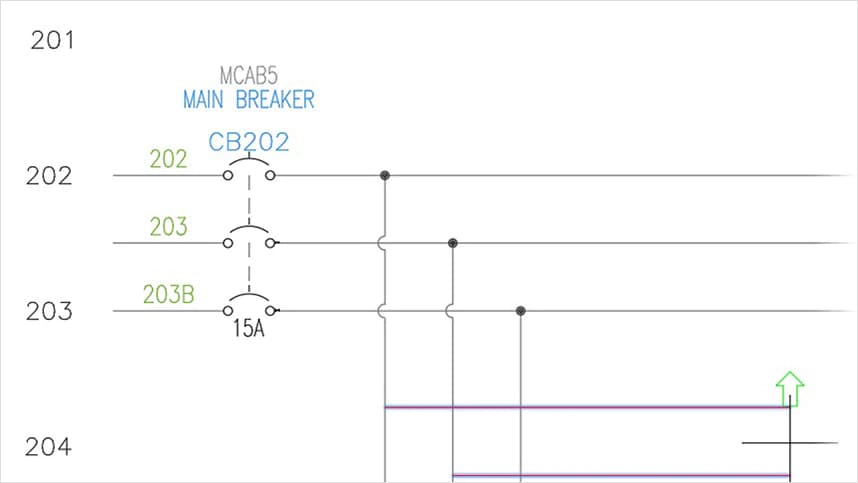Innovative Electrical Design Solutions for Modern Facilities
As metropolitan environments expand significantly complicated, including modern technologies such as smart grids and sustainable power resources ends up being critical. These innovations not only assure to enhance energy usage however additionally foster resilience against future needs.
Importance of Innovative Electrical Design
Cutting-edge electric design plays a crucial function in contemporary framework, influencing not just performance but additionally sustainability. As cities develop and the need for energy increases, the need for innovative electrical systems ends up being critical. These systems need to not just satisfy present needs but also anticipate future growth and technical innovations.
A well-executed electric design can significantly lower power consumption, thereby reducing functional prices and decreasing ecological influence. By incorporating renewable power resources, such as solar panels and wind turbines, cutting-edge layouts can improve power freedom and strength. Smart grid modern technologies allow for real-time surveillance and administration of energy circulation, optimizing efficiency and reducing waste.
Safety is an additional crucial facet of electric design. Executing strenuous requirements and sophisticated innovations can minimize dangers connected with electric failures, guaranteeing a secure setting for organizations and citizens alike. Additionally, innovative designs facilitate versatility, enabling frameworks to incorporate emerging innovations effortlessly.
Secret Trends in Electric Design
As the landscape of electric design remains to evolve, several vital fads are forming the future of the industry. One considerable trend is the combination of wise technology right into electrical systems. The expansion of the Net of Points (IoT) has enabled real-time surveillance and control of electrical devices, improving efficiency and promoting predictive upkeep.
Another pattern is the expanding focus on modular design. This method enables scalable and versatile options, enabling facilities to adapt to altering requirements without extensive remodellings. Furthermore, making use of innovative simulation tools and Structure Information Modeling (BIM) is becoming increasingly common, simplifying the design process and enhancing partnership amongst stakeholders.
Additionally, advancements in materials science are causing the growth of lighter, much more long lasting, and energy-efficient parts. This development is particularly vital for high-performance buildings and infrastructure jobs.
Finally, there is a significant change in the direction of data-driven decision-making - electrical engineering design services. Leveraging data analytics aids developers enhance systems for performance and cost-effectiveness. With each other, these trends signify a transformative period in electrical design, boosting functionality, sustainability, and resilience in modern-day framework
Lasting Power Solutions
Sustainable power solutions are increasingly coming to be a vital focus in electrical design, mirroring a broader commitment to ecological obligation and resource performance. These services intend to decrease environmental impact while enhancing power usage in different infrastructures, from household buildings to huge industrial facilities.
Among the primary approaches involves the combination of renewable resource sources, such as solar panels and wind turbines, right into electrical systems. This not only minimizes dependency on nonrenewable fuel sources but likewise enhances energy resilience. Additionally, cutting-edge energy storage space systems, such as advanced batteries, enable reliable monitoring and circulation of energy, ensuring that excess energy produced throughout peak production can be utilized throughout high need durations.
Furthermore, energy-efficient design practices are being adopted to boost overall system performance. This includes utilizing energy-efficient lights, a/c systems, and wise structure innovations that adapt and keep track of energy usage based upon tenancy and environmental problems.
Smart Grid Technologies
The implementation of lasting energy solutions naturally causes the expedition of wise grid innovations, which play a crucial role in improving electric systems. Smart grids take advantage of advanced communication modern technologies and information analytics to boost the integrity, performance, and sustainability of electrical power distribution. By integrating digital innovation with traditional grid facilities, my link these systems promote real-time tracking, automated control, and improved decision-making abilities.
Among the vital functions of wise grids is their ability to fit renewable power resources, such as solar and wind power. This flexibility not just reduces reliance on fossil gas yet also permits a much more decentralized power manufacturing design. In addition, smart grids allow need action programs, where consumers can readjust their energy usage based upon real-time prices, consequently advertising energy preservation and minimizing peak lots needs.
Furthermore, smart grid innovations improve grid durability by allowing quicker recognition and resolution of blackouts, ultimately minimizing downtime. With predictive maintenance and analytics, utilities can improve and enhance procedures service shipment. As neighborhoods and cities remain to evolve, smart grid innovations are vital for building a reliable and sustainable electric infrastructure that satisfies the needs of contemporary society.

Future-Proofing Facilities
To ensure lasting viability and flexibility, future-proofing facilities is vital in the rapidly evolving landscape of electric design solutions. As technology developments and energy demands shift, it is essential that electric systems are designed with versatility in mind. This requires including scalable services that can fit future upgrades without necessitating substantial overhauls.

Furthermore, sustainability should be a cornerstone of future-proofed designs. Using eco-friendly energy resources, such as solar and wind, and optimizing energy performance decrease reliance on fossil fuels, lining up with global initiatives to fight climate adjustment.
Verdict
By focusing on flexibility, performance, and sustainability, these services address the developing demands of power systems. The combination of clever grid technologies and sustainable power remedies boosts durability and decreases operational prices.
A well-executed electrical design can you could check here significantly minimize energy consumption, consequently reducing operational costs and decreasing environmental effect. By incorporating eco-friendly power resources, such as solar panels and wind turbines, ingenious styles can improve power independence and durability. Additionally, ingenious power storage systems, such as sophisticated link batteries, make it possible for efficient management and circulation of energy, guaranteeing that surplus power generated during optimal manufacturing can be made use of during high demand periods.
Wise grids make it possible for need action programs, where consumers can change their power use based on real-time rates, consequently advertising power conservation and minimizing peak lots needs. (residential electrical design)
As innovation advancements and energy demands change, it is critical that electrical systems are developed with adaptability in mind.